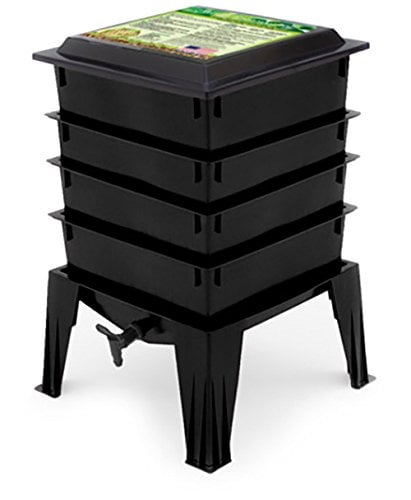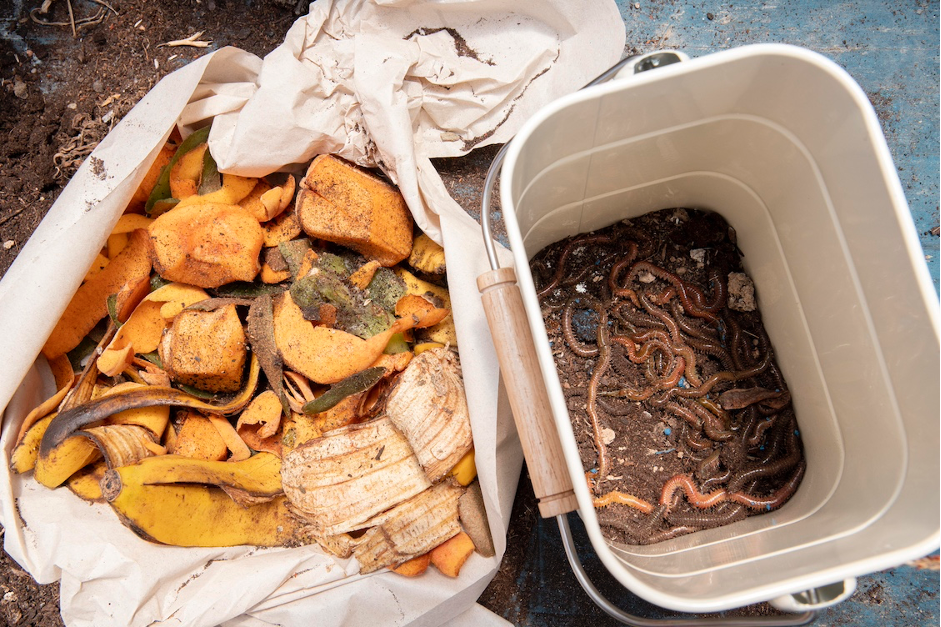 The best earthworm species for worm composting (also known as vermicomposting) are red wiggler worms. When compared to ordinary organic composting, worm composting is better because the worms used in this type of process gets to produce more. Its by-products are nutrient-filled; and is basically a hassle-free and an eco-friendly way for recycling organic wastes. Either way, you can compost with these fascinating red worms indoors or outdoors (paves the way for a year round of composting).
The best earthworm species for worm composting (also known as vermicomposting) are red wiggler worms. When compared to ordinary organic composting, worm composting is better because the worms used in this type of process gets to produce more. Its by-products are nutrient-filled; and is basically a hassle-free and an eco-friendly way for recycling organic wastes. Either way, you can compost with these fascinating red worms indoors or outdoors (paves the way for a year round of composting).
And just like any living thing that seeks a comfortable place to live in, Red Wiggler worms are also in need of the same thing. So before placing your compost pals in your composting bin, you should be able to prepare their bedding first. A worm bedding is usually a pile of organic materials that the worms stay and thrive in. So start by gathering materials, and then mixing all these together. These organic materials can be in the form of dried leaves, some pre-soaked and shredded newspaper or cardboard, some shredded straw, some dried clippings of grass, and some days old animal manure (don’t use pet manure for this). Your worms will also eat the materials inside the bin. So what you can further do is to put in a few more organic wastes like fruit and vegetable peels, some broken egg shells, and coffee grounds. Also, put in two handfuls of soil or sand. These materials will help provide that much needed grit for the worms to be able to digest properly. Take note that red wrigglers have no teeth, so imagine how they eat. Take into consideration the size of the organic materials that you’ll be putting inside the worm bin, as preparing these into smaller pieces will be a lot helpful to them (so that they may eat these materials with ease).

Your worm pals also like being in moist and dark surroundings, so putting them in these kinds of conditions will help them a lot. They would be able to thrive better in these conditions given that their bodies are made up of 75 to 90 percent water. Their bodies should always be kept moist to enable them to breathe better. And to be able to shun them away from all the bright lights, and to also keep the moisture inside the worm composting bin, you should be able to cover it with a lid that has a tight-lock feature to it.
Red Wigglers (also known as Eisenia foetida, tiger worms and manure worms) are also able to grow in number fast. The more worms there are in your bin, the more worm composts you’ll get soon after. Procreation works best for these worms if they are given enough food supply, and an ample amount of space to move around and breed. So, when they’re given the right amount of food and care, they’ll also be able to produce for you a quality-made, and odorless natural fertilizer (also known as worm compost or worm castings). You can use this natural fertilizer as an alternative to chemical fertilizers. It’s cost-effective, and will surely help you save financially.
Basically, worm composting is a good way for disposing of organic scraps, especially those that are regularly accumulated in the kitchen. It also provides your red wiggler worms a healthy food supply. There are actually a lot of beneficial things that you can get from vermicomposting with red wrigglers. You can learn more about this from our article: Facts About Vermicomposting.
Uncle Jim’s recommends the 2000 Red Wiggler worms sale
Ever wondered about the amount of Red Wriggler worms to use when starting a worm composting project? Well, starting out with 2000 Red Wriggler worms is the best choice yet. We’ll surely guarantee that these compost wonders get to you live, and insect/mite free! To know more about the product, check the 2000 Red Wiggler worms sale here:








